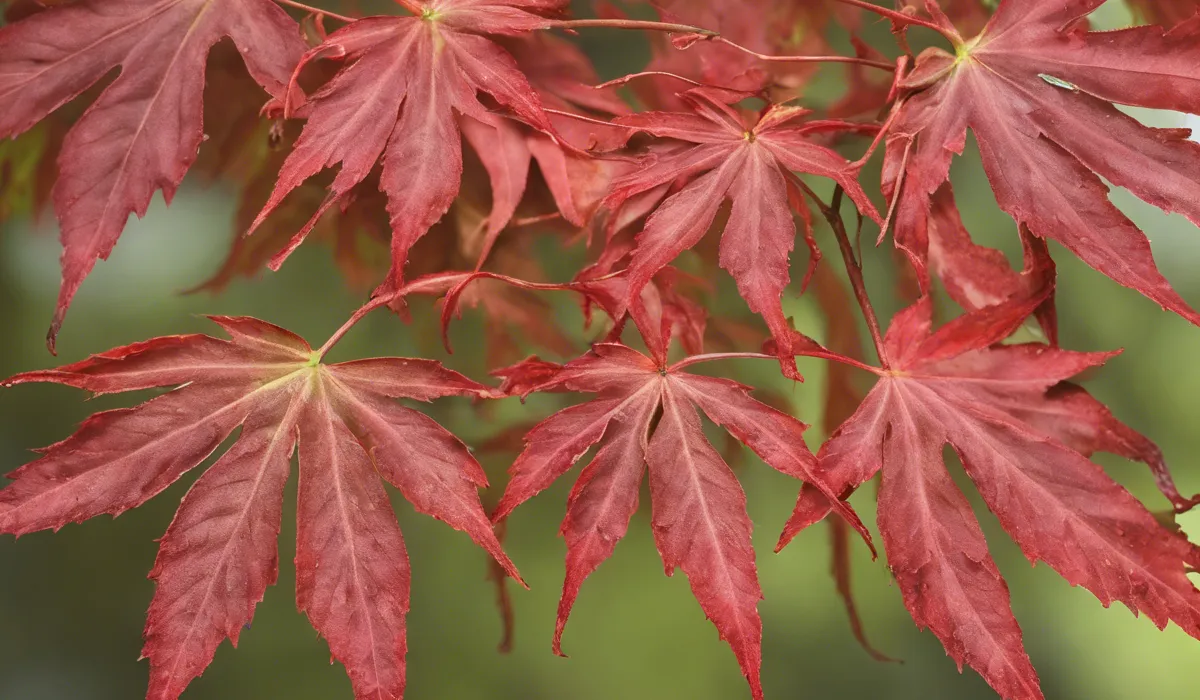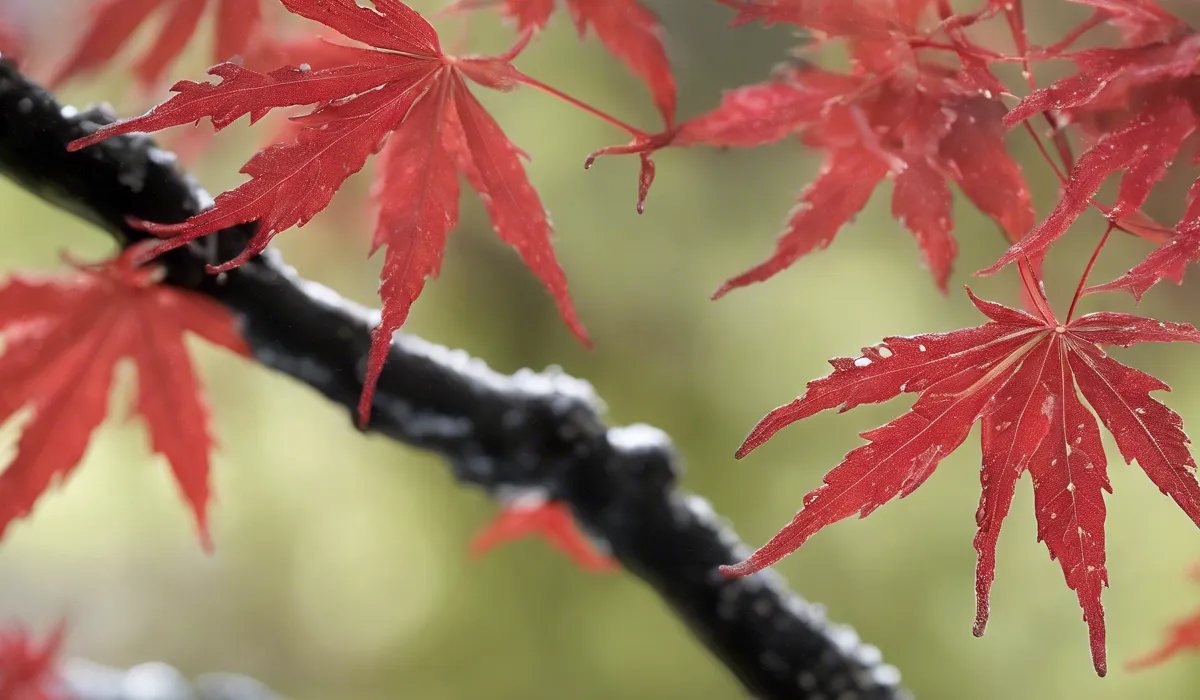To treat powdery mildew on a Japanese maple, prune affected areas, improve air circulation by thinning dense foliage, and apply a fungicide specifically designed for powdery mildew. Ensure the tree is well-watered but avoid overhead watering to reduce humidity.
Identification of Powdery Mildew on Japanese Maple

Visual Characteristics of Powdery Mildew
Powdery mildew presents itself as a white or gray powdery growth on the leaves and sometimes the stems of Japanese maple trees.
It often starts as small, circular spots that can expand and cover large areas of the foliage and even the flowers.
The mildew typically appears on the upper surface of the leaves but can also be found on the lower side in more severe cases.
Environmental Factors Contributing to Mildew
Humidity and poor air circulation are the primary conditions that encourage the growth of powdery mildew.
Overhead watering can increase leaf wetness and humidity around the foliage, creating an ideal environment for mildew spores to thrive.
Shaded areas with little to no direct sunlight can also contribute to the problem.
Distinguishing Powdery Mildew from Other Issues
To tell powdery mildew apart from other plant issues, look for the telltale powdery spots that are not typically seen with other diseases.
Unlike some fungal infections, powdery mildew does not usually cause the leaves to become yellow or brown initially, though they might become discolored as the condition worsens.
Prevention Strategies for Powdery Mildew

Choosing the Right Planting Location
Selecting a site with good air circulation, access to sunlight, and ample space between plants is crucial.
A location that avoids the dampness and shade which encourage mildew growth is the best choice for your Japanese maple.
Watering and Fertilization Practices
Water Japanese maples at the base to avoid wetting the leaves and to reduce humidity levels. Fertilize appropriately; too much nitrogen can lead to lush foliage that is more susceptible to mildew attacks.
Regular Pruning for Improved Air Flow
Prune your Japanese maple to remove any dead or overcrowded branches. This increases air circulation which helps to dry out the foliage and reduce the risk of mildew growth.
Selecting Resistant Varieties
When choosing a Japanese maple, opt for varieties that are known to be resistant to powdery mildew. This can significantly reduce the potential for future mildew problems.
Treatment Options for Infected Trees

Organic Treatment Methods
For an organic approach, consider applying horticultural oils or a milk solution to affected areas. A baking soda spray can also be effective.
These should be applied thoroughly to the foliage, following label instructions for best results.
Chemical Fungicide Applications
Systemic fungicides absorbed by the plant or contact fungicides that remain on the surface can be used.
Choose products that are safe for use on Japanese maples and follow the application guidelines carefully.
Application of Treatments
Apply treatments evenly to all infected areas. It’s important to cover both sides of the leaves and the stems if needed.
Repeat applications may be necessary as per the product’s instructions or until the mildew is under control.
Treatment Frequency and Timing
Timing and frequency of applications are critical. Begin treatment as soon as mildew is detected and continue at regular intervals as described by the fungicide’s directions. Some products may require use every 7 to 14 days for effective control.
Monitoring and Post-Treatment Care
After treating powdery mildew, continue to monitor your Japanese maple for signs of recurrence. Maintaining good cultural practices will help prevent a return of the disease.
FAQs About Treating Powdery Mildew on Japanese Maple
How do you prune a Japanese maple to treat powdery mildew?
Prune the affected areas carefully to remove any mildew-infected leaves or branches, and dispose of them properly to prevent the spread of spores.
What can be done to improve air circulation for a Japanese maple?
Thin out dense foliage to improve air circulation, which can help reduce the humidity that powdery mildew thrives in.
Which fungicide should be used for powdery mildew on a Japanese maple?
Apply a fungicide that is specifically formulated to treat powdery mildew, following the manufacturer’s instructions for application and safety.
How should a Japanese maple be watered to avoid powdery mildew?
Water the tree at the base to minimize humidity and moisture on the leaves, and avoid overhead watering which can increase the risk of powdery mildew.
What general care should be taken for a Japanese maple to prevent powdery mildew?
Ensure the Japanese maple is well-watered, especially during dry periods, and maintain good cultural practices such as regular pruning and appropriate fertilization.
Final Thoughts
To combat powdery mildew on a Japanese maple, carefully prune away affected areas, enhance air flow by thinning out dense branches, and use a fungicide for this specific disease.
Proper watering practices are crucial; water at the base to keep foliage dry and minimize the mildew-friendly moisture.
